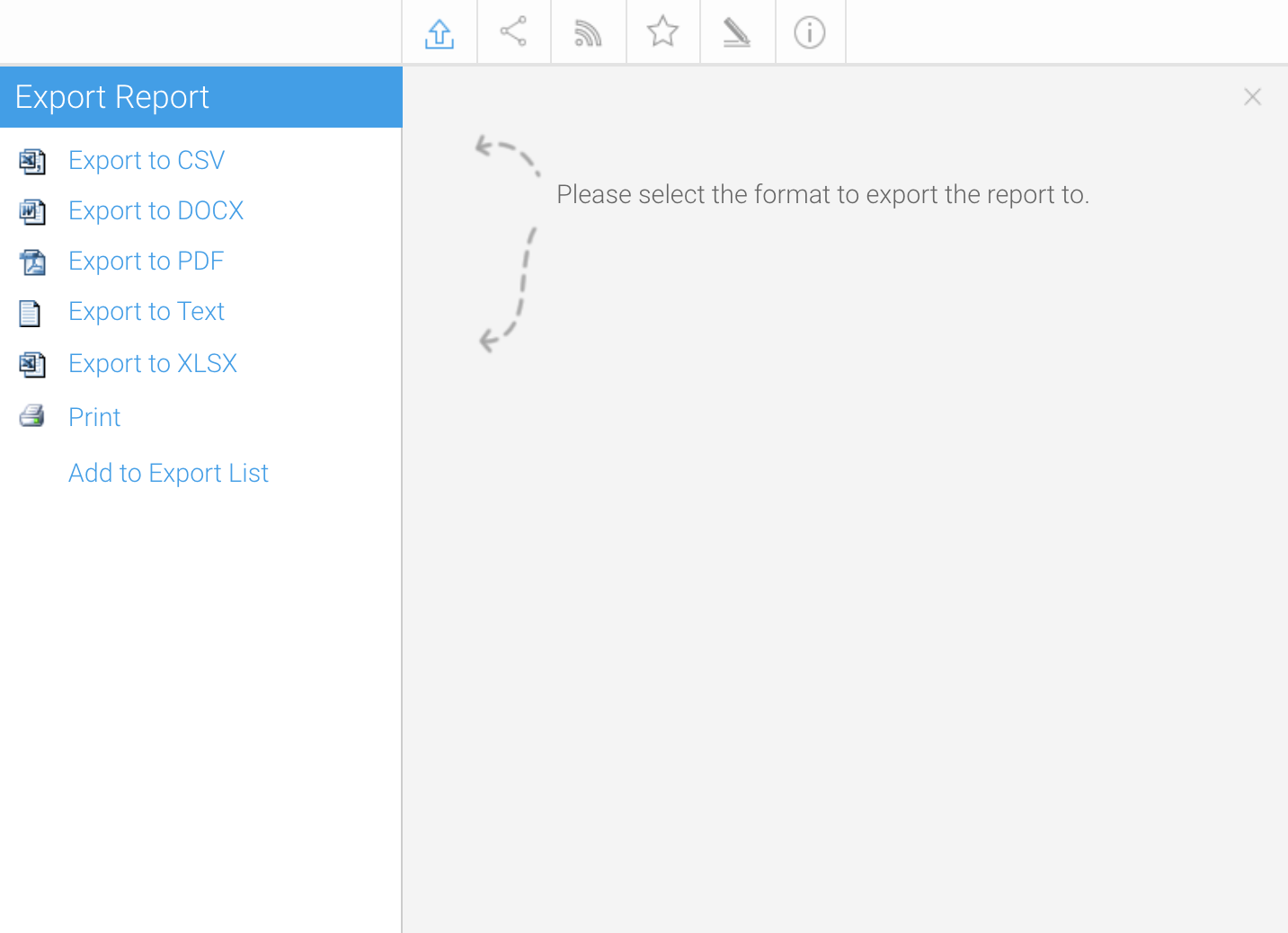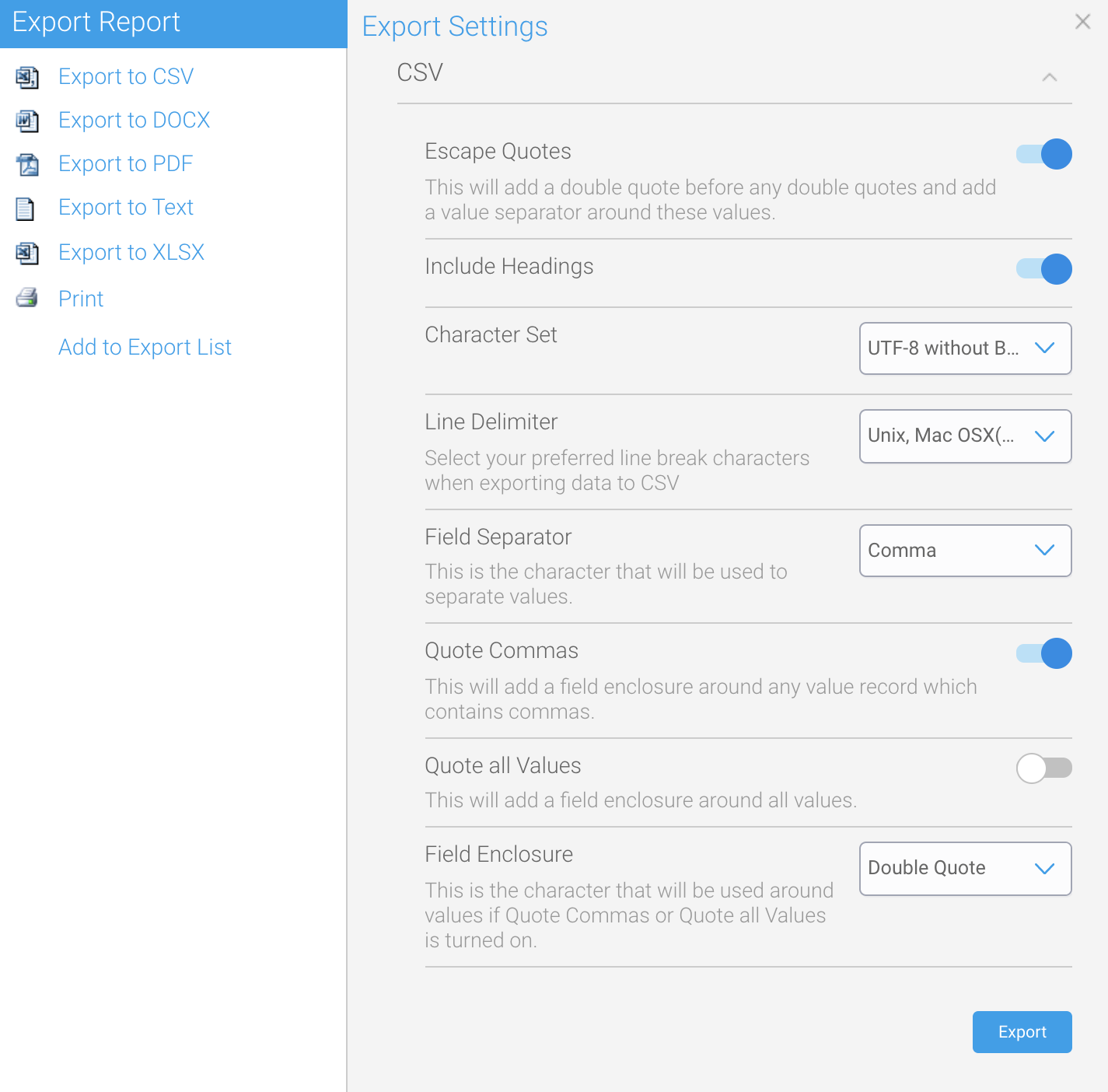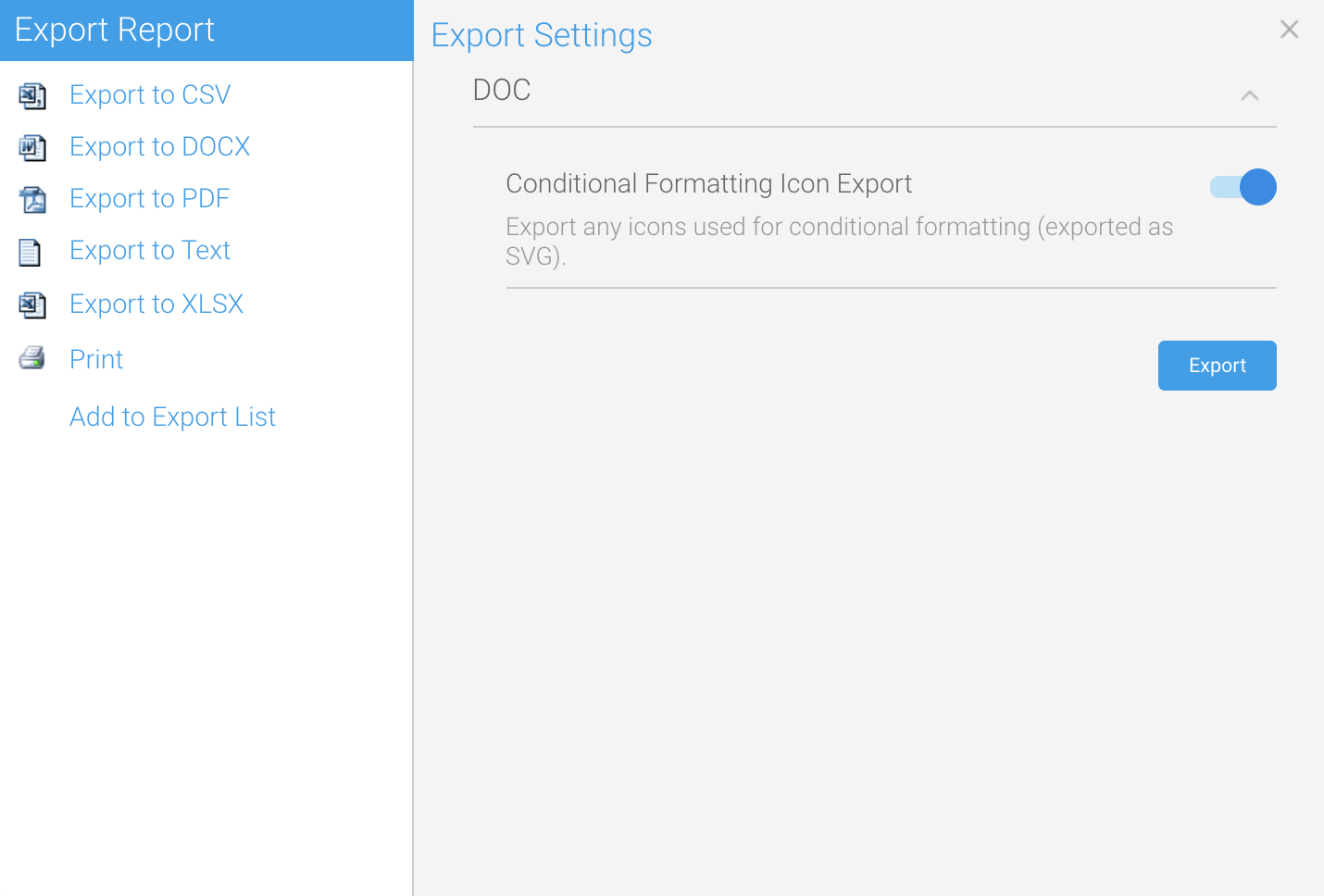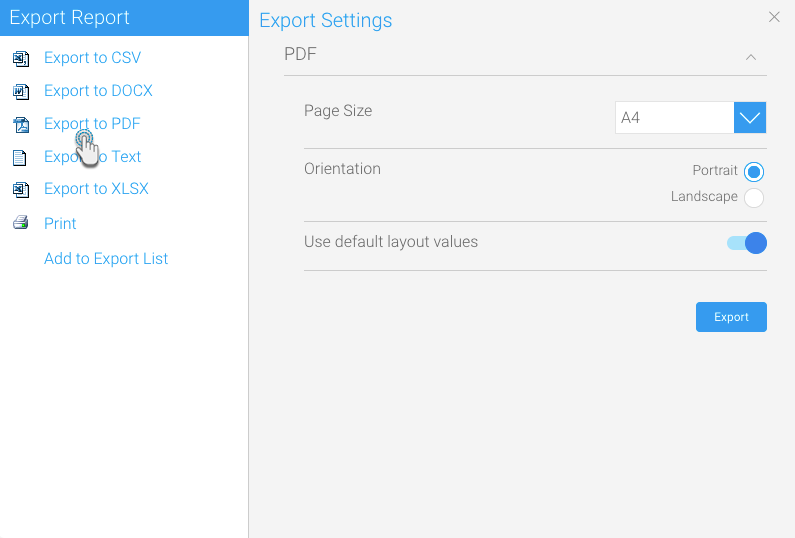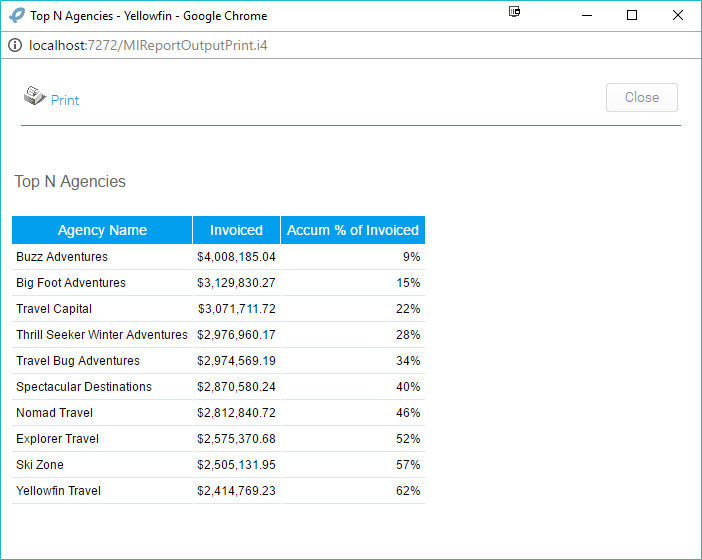Overview
To export a report from the Output step:
- Click on the Export button on the main navigation bar
- Select the format you wish to report to
From here, you may need to provide additional options based on the selected format. CSV, PDF, and Print formats have additional options, for all others simply follow browser instructions to download the file.
Note: if you choose to export a report which contains a chart, your chart will not be updated if you change your data in XLS format. The chart will not be exported to CSV or Text formats.
Export to CSV
Once you have chosen the CSV format, you will be presented with export settings on the right panel of the menu.
Note that a report with a report summary, when exported to CSV format, will not include the summary.
Select your preferred settings and click the Export button. The table below provides more detail.
Export setting | Description |
|---|---|
Escape Quotes | If enabled, this setting adds an extra pair of double quotes around any part of a field value that’s already double quoted. This ensures that the double quoted portion is treated as part of the same field, and displayed with quotes, rather than a separate field. |
Include Headings | Use this to show or hide report table headings. If enabled, the first row of the CSV file will be the column heading names. This also works for cross tab reports, in which case the row heading names are also included. |
Character Set | Select the character set with which to encode the export file. Using the right character encoding set is essential if the exported file is to be reused in other applications that use a particular file encoding. Tip: Yellowfin uses the standard UTF-8 for storing double-byte characters. |
| Line Delimiter | Select from CR, CRLF and LF as line break characters for carriage returns. This is a useful setting when working with third-party tools which may require a specific carriage return type to correctly process CSV files. |
Field Separator | This is the character that will be used to separate individual fields (or data values) in the exported CSV file. Choose predefined separators, such as comma, semicolon, tab, or define a custom separator character. |
Field Separator Character | If the ‘Other’ option was selected for Field Separator definition, then specify a character to be used to separate values. This could be any character, alphabet, number; you are also able to specify multiple characters. |
Quote Commas | This will add Field Enclosure characters around any field value which contains commas, if enabled. This ensures that values containing commas are not treated as separate values before and after the comma. This is ideal for numeric values such as invoices that contain commas, eg: $6,328,754. |
Quote all Values | This toggle will add Field Enclosure characters around all individual fields. If this toggle is enabled, the Quote Commas option will be switched off. |
Field Enclosure | This is the character used to quote individual field values if either the Quote Commas or Quote all Values settings are switched on. Choose pre-defined enclosures such as single or double quotes, or define a custom enclosure character. |
Field Enclosure Character | If ‘Other’ is selected for the Field Enclosure character then specify a character to be used to quote fields in. This could be any character, alphabet, number; you are also able to specify multiple characters. |
Export to DOCX
Once you have chosen the DOCX format, you will be presented with export settings on the right panel of the menu.
Select your preferred settings and click the Export button. The table below provides more detail.
Export setting | Description |
|---|---|
Conditional Formatting Icon Export | If your report uses conditional formatting to display icons instead of data, enabling this option will ensure that those icons are exported. Disabling this option will ignore any conditional formatting and instead use the original data values. |
Export to PDF
Once you have chosen the PDF format, you will be presented with export settings on the right panel of the menu.
Select your preferred settings (see below for details on each) and click the Export button.
Export setting | Description |
|---|---|
Page Size | Select the page size for your PDF file. This specification allows other layout settings to be configured properly. |
Orientation | Choose the orientation of your file. Options include Portrait or Landscape. |
Use default layout values | Allows you to use the default system layout settings for the exported PDF. If disabled, you will be able to define specific layout options, discussed below. |
If you'd like to customize your PDF export settings, switch off the Use default layout values option to see a full list of options. For example, you can create secure PDFs, shrink content to fit the page width, and force additional page breaks if your report contains any content overlaps.
Export to text
Once you have chosen the Text format, your report will be instantly exported and downloaded into your default folder. Note that there are no settings to be configured for this option.
Export to XLSX
Once you have chosen the XLSX format, you will be presented with export setting on the right panel of the menu.
Select your preferred settings and click the Export button. See below for some tips in formatting this report.
Export setting | Description |
|---|---|
Keep formatting | This allows any formatting done on values to be retained when they are exported. Formatting includes prefixes, suffixes, or thousand separators in numeric values, a date format applied to date fields, or links added to text fields. Disable this to export raw values, without any formatting. In the above example, the values will be exported as numbers - provided Excel identifies them as numeric values. For instance, the above example will be exported as 100000000. |
Format column and row size | Enabling this will adjust the column widths and row heights to best fit the content in the Excel file. This allows all the content to be visible without opening the cells to see more in case of long text values. This will take longer to export content, however will make the file look neater and easier to read. Disable this to save export time in case of a large file. |
Export tabbed co-displays | This setting is suitable for tabbed co-displayed reports that have separate reports that are brought up by navigating through tabs. The toggle will enable such reports to be exported in the same way, where each report will be in a separate Excel tab. If this is disabled, then only the main report will be exported. |
Wrap text | Enable this toggle to wrap long lines of text when exporting a report to XLSX. The text limit can be defined by the user in the Wrap Length field. Note that this is not supported for merged cells. |
Wrap length | If text wrapping is enabled, provide the maximum number of characters in a column after which the line will break and move the remaining text to the next line. |
Once you have chosen the Print format, you will see a preview window displayed. This window allows you to view the output and click the Print link to proceed.
Note: you may be prompted to select your printer settings. These settings are determined by your printer and local software / hardware components. Choose the settings that are appropriate for you, and click the print button.
Add to export list
If you prefer to watch the progress of your exports from a list, you can click on the option Add to export List. The export list is a separate dashboard where you can monitor your exports.
